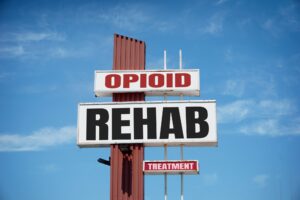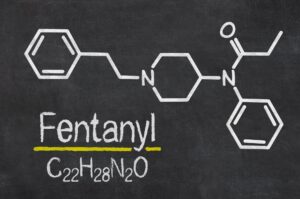According to WebMD, there are around 21 million prescriptions written every year for Ativan.
Ativan addiction often begins innocently, with a prescription for anxiety or insomnia. But the drug’s calming effects can lead to dependency and, eventually, addiction.
Today we’re taking a closer look into the gradual progression of Ativan addiction, its signs, effects, and strategies to overcome this challenging condition.
The Slow Progression of Ativan Addiction
Ativan addiction often begins with a simple prescription for anxiety or insomnia. What starts as a treatment meant to help can slowly evolve into something more dangerous. The progression of Ativan addiction is usually gradual, making it difficult to recognize until the dependency has already taken hold.
There are three main stages in the progression:
- Initial Use and Relief
- Increased Tolerance and Dependency
- Misuse and Addiction
Initial Use and Relief
The first stage typically involves using Ativan as prescribed. At this point, the drug works effectively to alleviate anxiety or help with sleep.
The user experiences relief, which reinforces the use of the medication. It seems harmless, and there is no immediate sign of trouble.
Increased Tolerance and Dependency
Over time, the body becomes accustomed to the effects of Ativan. The stage is marked by a growing tolerance, where the initial dosage no longer provides the same level of relief.
To achieve the same calming effect, the user may begin taking higher doses. The increase often happens gradually, without the user fully realizing they are becoming dependent on the drug. As tolerance builds, the risk of dependency grows.
Misuse and Addiction
The final stage is when misuse turns into full-blown addiction. At this point, the user may start taking Ativan in ways not prescribed, such as taking more than directed or using it more frequently.
The need to use the drug becomes a compulsion, driven by both physical dependence and the desire to avoid withdrawal symptoms. It’s where addiction takes hold, and the user finds it difficult to stop using the drug, even when it’s no longer needed for its original purpose.
Ativan Addiction Signs to Watch For
Recognizing the signs of addiction early can make a significant difference in preventing the situation from worsening. There are three main types of signs to watch for when it comes to Ativan addiction:
- Physical Signs
- Behavioral Signs
- Psychological Signs
Physical Signs
One of the first signs might be a noticeable change in physical health. A person addicted to Ativan may experience drowsiness, dizziness, or fatigue even when they should be feeling rested.
Over time, coordination problems can develop, making tasks that require fine motor skills difficult. Memory issues also become more frequent, with the individual struggling to recall recent events or conversations. The physical changes are often accompanied by an increasing tolerance to the drug, meaning that higher doses are needed to achieve the same effect.
Behavioral Signs
Behavioral changes are another key indicator of Ativan addiction. A person may start to isolate themselves from friends and family, avoiding social situations they once enjoyed.
They may become secretive, hiding their Ativan use or lying about how much they’re taking. Work or school performance might suffer as they find it harder to focus or maintain their responsibilities. Irritability and mood swings can also become more common as the addiction deepens.
Psychological Signs
The psychological impact of Ativan addiction can be profound. Anxiety and depression may worsen, despite the drug initially being prescribed to alleviate these symptoms. The individual might experience intense cravings for Ativan, feeling that they need it to get through the day.
Paranoia or feelings of being out of control can also emerge as the addiction takes hold. The psychological symptoms often drive the person to continue using the drug, creating a vicious cycle that’s hard to break.
The Effects of Ativan Abuse on the Body and Mind
While Ativan is effective for short-term relief from anxiety or insomnia, long-term use or misuse can lead to a range of harmful effects.
There are three primary areas affected by Ativan abuse:
- Short-Term Physical Effects
- Long-Term Physical Health Issues
- Psychological Impact
Short-Term Physical Effects
In the short term, Ativan can cause drowsiness, dizziness, and coordination problems. The effects can make everyday tasks difficult and increase the risk of accidents. Users may also experience blurred vision, headaches, and muscle weakness.
These symptoms are often seen in those who misuse Ativan or take higher doses than prescribed. The calming effect that makes Ativan appealing can quickly become overwhelming, leading to a lack of energy and motivation.
Long-Term Physical Health Issues
Over time, the abuse of Ativan can lead to more severe physical health problems. Chronic use can result in liver damage, especially when the drug is combined with alcohol or other substances. The respiratory system can also be affected, with users experiencing difficulty breathing or shallow breathing.
Long-term use may impair cognitive functions, such as memory and concentration, which can persist even after stopping the drug. The body’s dependence on Ativan can also lead to withdrawal symptoms when trying to quit, including tremors, sweating, and seizures.
Psychological Impact
The psychological effects of Ativan abuse can be just as damaging as the physical ones. While the drug initially helps reduce anxiety, long-term misuse can increase anxiety levels and lead to depression.
Users may find themselves in a constant state of worry, unable to cope without the drug. Mood swings, irritability, and paranoia are common as the brain becomes more dependent on Ativan to function.
The drug’s influence on the brain’s chemistry can make it difficult to feel joy or satisfaction without it, leading to a cycle of continued use and deepening psychological distress.
The Role of Ativan in Dependency and Tolerance
When a person starts taking Ativan, the drug effectively reduces anxiety and produces a calming effect. Over time, however, the body begins to adapt to the presence of the medication.
This adaptation is known as tolerance, where the initial dose of Ativan no longer produces the same effects. To achieve the same level of relief, the individual may need to increase the dosage.
This is where the cycle of dependency begins. The body becomes accustomed to higher doses, and stopping or reducing the medication can lead to withdrawal symptoms.
Dependency on Ativan is both physical and psychological. Physically, the body relies on the drug to function normally. This dependence can cause withdrawal symptoms if the medication is reduced or stopped abruptly.
The symptoms can be uncomfortable and even dangerous, making it difficult for someone to quit without medical support. Psychologically, the individual may feel they cannot cope with daily life without Ativan. The calming effect that once helped manage anxiety now becomes a crutch, leading to continued use despite knowing the risks.
Tolerance and dependency often go hand in hand. As tolerance builds, the risk of dependency increases. The individual finds themselves needing more of the drug to feel normal, creating a cycle that can be hard to break.
Ativan Withdrawal Symptoms: What to Expect
Ativan withdrawal can be a challenging and uncomfortable experience. When someone who has become dependent on the drug tries to stop or reduce their intake, their body reacts to the sudden absence.
The reaction can lead to a variety of withdrawal symptoms, which can range from mild to severe. Understanding what to expect during this process is essential for those considering quitting Ativan, as well as for their loved ones who want to offer support.
One of the first symptoms people often experience is a resurgence of anxiety. Ativan is commonly prescribed to manage anxiety, so it’s not surprising that this symptom returns once the drug is reduced or stopped.
The anxiety during withdrawal can be more intense than what the individual originally experienced before starting the medication. Heightened anxiety can be accompanied by restlessness and irritability, making the person feel on edge and uncomfortable.
Insomnia is another common withdrawal symptom. Ativan’s sedative effects often help people sleep, so when it’s no longer in the system, sleep disturbances can occur.
The person may find it difficult to fall asleep or stay asleep through the night. The lack of sleep can contribute to other withdrawal symptoms, like fatigue and mood swings.
Physical Symptoms
Physical symptoms are also common during Ativan withdrawal. It can include headaches, sweating, and tremors. Some people may experience nausea or vomiting, which can make the withdrawal process even more unpleasant.
In severe cases, individuals might face more dangerous symptoms like seizures. It’s why medical supervision is often recommended when withdrawing from Ativan, especially for those who have been using the drug for an extended period or in high doses.
One of the most challenging aspects of Ativan withdrawal is the psychological impact. Besides anxiety, individuals may experience depression, confusion, or even hallucinations.
The symptoms can make the person feel disconnected from reality, adding to the overall difficulty of the withdrawal process. The psychological distress can be overwhelming, leading some to relapse just to find relief from these intense feelings.
The timeline for Ativan withdrawal varies depending on factors like the dosage and how long the person has been using the drug. Symptoms can begin as soon as 24 hours after the last dose and may last for several weeks. The first few days are often the most intense, but symptoms can linger, making the process feel drawn out.
Treatment Options for Ativan Addiction
Overcoming Ativan addiction is a difficult but achievable goal with the right support and treatment. Treatment for Ativan addiction often involves a combination of medical intervention, therapy, and ongoing support.
These components work together to address the physical, psychological, and emotional aspects of addiction, helping individuals regain control over their lives.
The first step in treating Ativan addiction is usually a medically supervised detox. Because of the withdrawal symptoms associated with Ativan, detox should be done under the care of healthcare professionals.
It ensures that any severe symptoms, such as seizures or extreme anxiety, are managed safely. Detox helps to rid the body of the drug, but it’s just the beginning of the recovery process.
CBT
After detox, therapy becomes a crucial part of the treatment plan. Cognitive-behavioral therapy (CBT) is commonly used to help individuals understand the thoughts and behaviors that led to their addiction.
Through CBT, they can develop healthier coping strategies for dealing with stress and anxiety without relying on Ativan. Therapy sessions may be one-on-one with a therapist or in a group setting where individuals can share their experiences and support each other.
Inpatient or outpatient rehabilitation programs are also effective options for those recovering from Ativan addiction. Inpatient programs provide a structured environment where individuals can focus entirely on their recovery without the distractions or temptations of everyday life.
Outpatient programs offer similar support but allow individuals to live at home and continue working or attending school while receiving treatment. The choice between inpatient and outpatient care depends on the severity of the addiction and the individual’s personal circumstances.
Support Groups
Support groups play an important role in long-term recovery. Groups like Narcotics Anonymous (NA) or other local support networks provide a space for individuals to connect with others who have gone through similar experiences.
The groups offer emotional support, practical advice, and a sense of community that can be vital for maintaining sobriety. Regular attendance at support group meetings can help individuals stay motivated and committed to their recovery.
Finally, aftercare planning is essential to ensure long-term success. Aftercare might include ongoing therapy, regular check-ins with a healthcare provider, or continued participation in support groups.
It helps individuals stay on track, recognize potential triggers for relapse, and develop strategies to handle those situations. Aftercare provides the tools needed to maintain a healthy, drug-free lifestyle.
Ativan Treatment and Recovery
Overcoming Ativan addiction is a challenging journey, but with the right support and treatment, recovery is possible.
At Reflections, we’re proud to be a top Dual Diagnosis and Co-Occurring Disorder Residential Substance Dependence Treatment Program. We provide our patients with tailored 30-90 day programming to help them do deeper and more intensive psychological work. And we offer clinical excellence in the intensive treatment of addiction and dependence.
Get it touch with us today to find out how we can help you.




